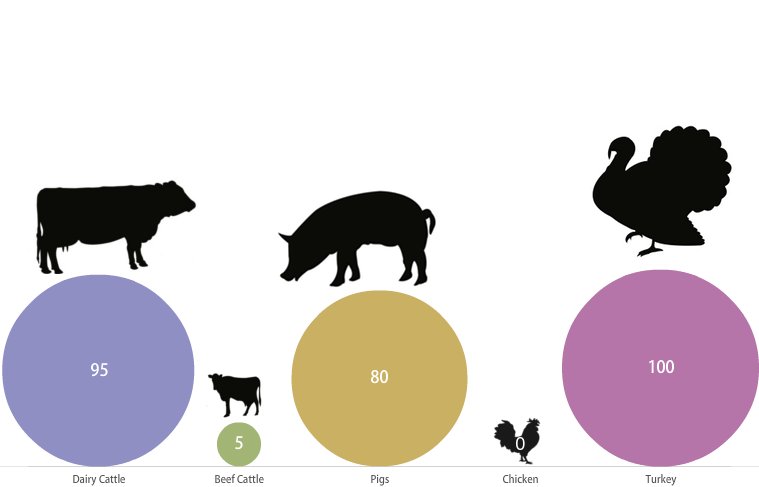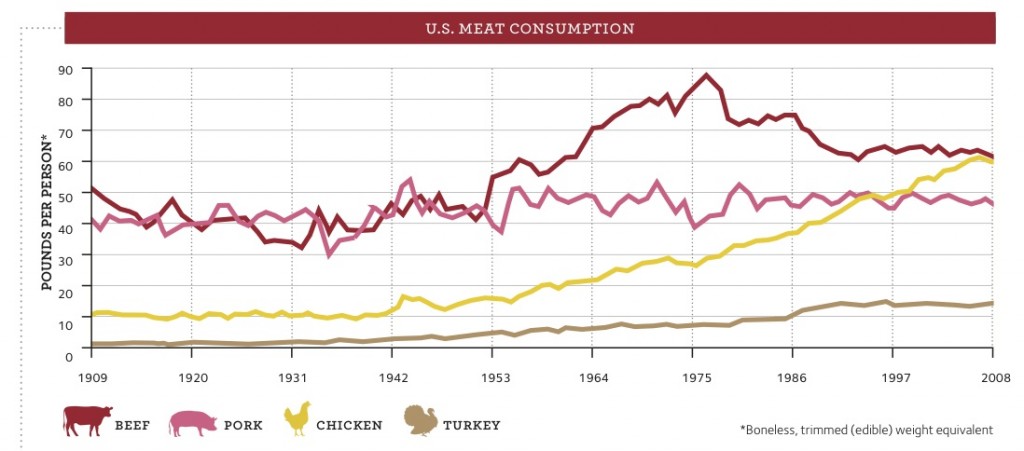Artificial Insemination: What About the Other Animals?
Our latest Freakonomics Radio on Marketplace podcast, “Unnatural Turkeys,” reveals the surprising origins of the 40 million turkeys that Americans are going to eat this Thanksgiving. You can download/subscribe at iTunes, get the RSS feed, or read the transcript here.
So, 100 percent of commercially raised turkeys in the U.S. (save for heritage turkeys) are born from artificial insemination. But what about other animals? We talked to reproductive experts Dale Coleman at Auburn University, Wayne Singleton from Purdue, and Keith Bramwell at University of Arkansas. The graphic below shows what percentage of each animal is born from artificial insemination:

(Many Eyes, Hemera)
A good question arises from these findings: why aren’t chickens the result of artificial insemination, if 100 percent of turkeys are? It would make logical sense that chickens suffer from the same reproductive problem as turkeys, since chicken breast meat is also a consumer favorite. The answer: volume. “There are just too many chickens out there to artificially inseminate them,” says Keith Bramwell. “For the chicken industry, the goal is to produce chicken meat at the least possible cost. Artificial insemination does not do that.”
Indeed, U.S. chicken meat consumption is much higher than turkey meat:
Allen Harper from Virginia Tech told us another surprising fact — with artificial insemination, you don’t just get the best stock, it’s more efficient too: “[B]iologically, natural breeding is very wasteful of sperm. About 3 billion sperm cells is more than adequate to inseminate easily six or seven sows. Natural mating is really biological overkill in terms of sperm cells that are deposited.”
Which leads to perhaps the weirdest artificial reproductive strategy, this one from the fish farmers. Mike Freeze of KEO Fish Farms tells us that for the past 150 years, fish farming has been harvesting eggs from the female, and mixing them with milk (sperm) from the males in a bucket or a bowl. Since there are hundreds of thousands of fish eggs farmers are trying to fertilize with the same amount of sperm – containing the eggs in a bucket or bowl turns out to maximize output.


Comments